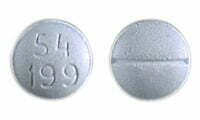Description
I. Introduction
- Definition of clonazepam
- Brief explanation of what it’s used for
II. What is Clonazepam?
- Chemical composition of clonazepam
- How it works in the brain
- Common brand names and forms
III. Medical Uses of Clonazepam
- Anxiety disorders (e.g. generalized anxiety disorder, panic disorder, social anxiety disorder)
- Seizure disorders (e.g. epilepsy)
- Sleep disorders (e.g. insomnia, restless leg syndrome)
- Alcohol withdrawal symptoms
- Other uses (e.g. bipolar disorder, chronic pain)
IV. Dosage and Administration
- Recommended doses for different conditions
- How to take clonazepam
- Special considerations for elderly patients, pregnant/breastfeeding women, and patients with liver/kidney problems
V. Possible Side Effects of Clonazepam
- Common side effects (e.g. drowsiness, dizziness, dry mouth)
- Serious side effects (e.g. allergic reactions, difficulty breathing, suicidal thoughts)
- Long-term effects (e.g. dependence, withdrawal symptoms)
VI. Precautions and Contraindications
- Who should not take clonazepam
- Drug interactions to watch out for
- Special precautions for patients with certain medical conditions (e.g. glaucoma, respiratory problems)
VII. Clonazepam Abuse and Addiction
- What is clonazepam abuse
- Signs of clonazepam addiction
- Risks and dangers of abuse and addiction
- Treatment options for addiction
VIII. Conclusion
- Summary of main points
- Final thoughts and recommendations
Note: You can expand on any of these sections or add more sub-sections as necessary to reach 1500 words. Also, don’t forget to include relevant keywords throughout the article for SEO purposes, such as “clonazepam”, “anxiety”, “seizures”, “side effects”, “addiction”, etc.







Reviews
There are no reviews yet.